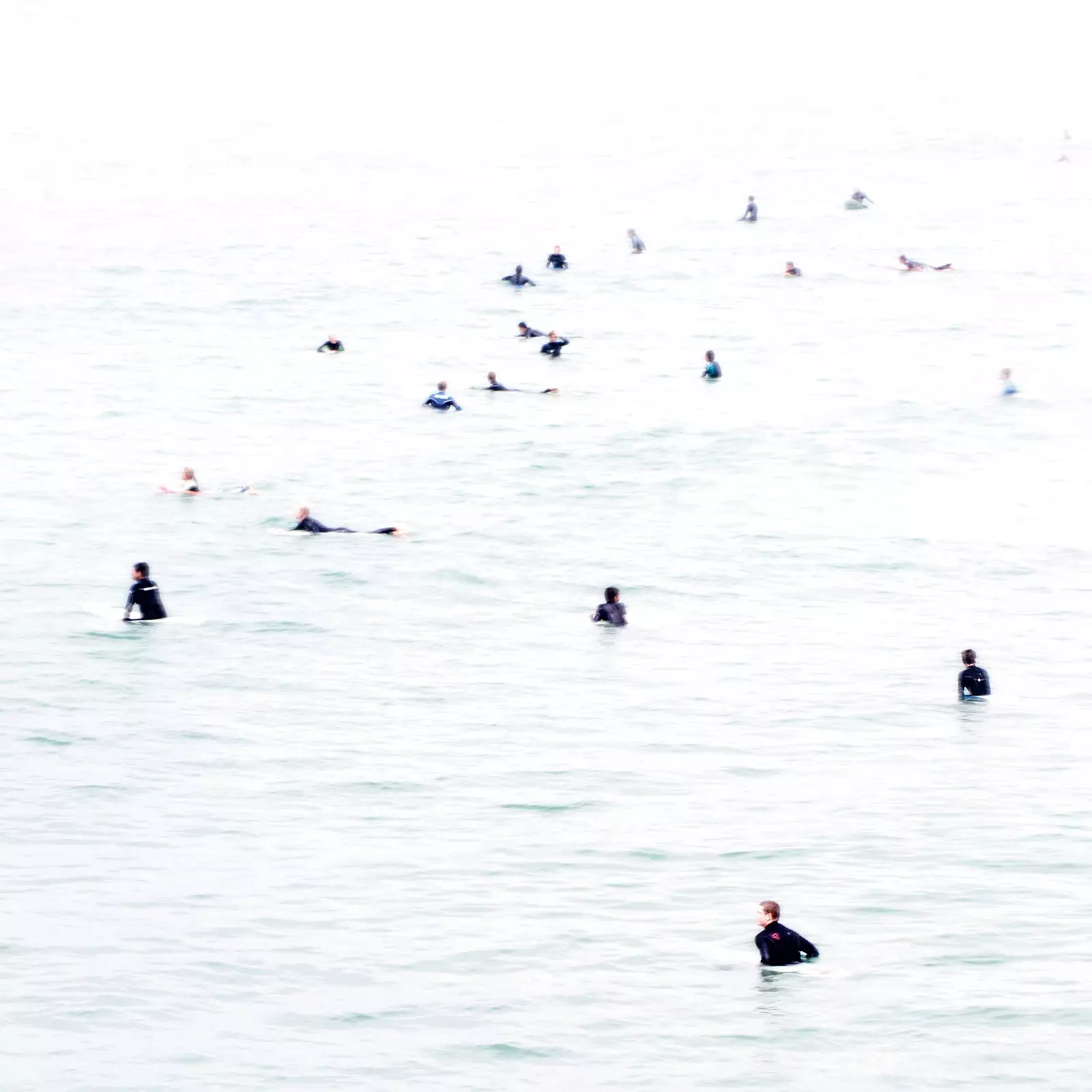
Long live Benidorm
For years cool was hate Benidorm. While this resort town on the Alicante coast was busy serving millions of happy visitors, the guardians of good taste and the snobbish middle class strongly disapproved.
benidorm was for elderly Spaniards who came here to dance pasodobles at night, or for british scorched by the sun that they made it to drink in the mornings. An affront to style, synonymous with the tackiest tourism, the low cost traveler in its most vulgar expression.
However, Benidorm is gone making fashionable, slowly but surely. Today, urban planning experts line up to praise its pioneering urbanism, the sustainable nature of its great 'vertical model' in contrast to the sprawling, resource-hungry urbanizations that came later.
Famous names come out of the closet to declare their love: Javier Marshal admires the professional efficiency of the city, its democratic character and the great design your planning –“I prefer it to Florence”–, while the architect and artist Oscar Tusquets simply declares: “Benidorm is beautiful”
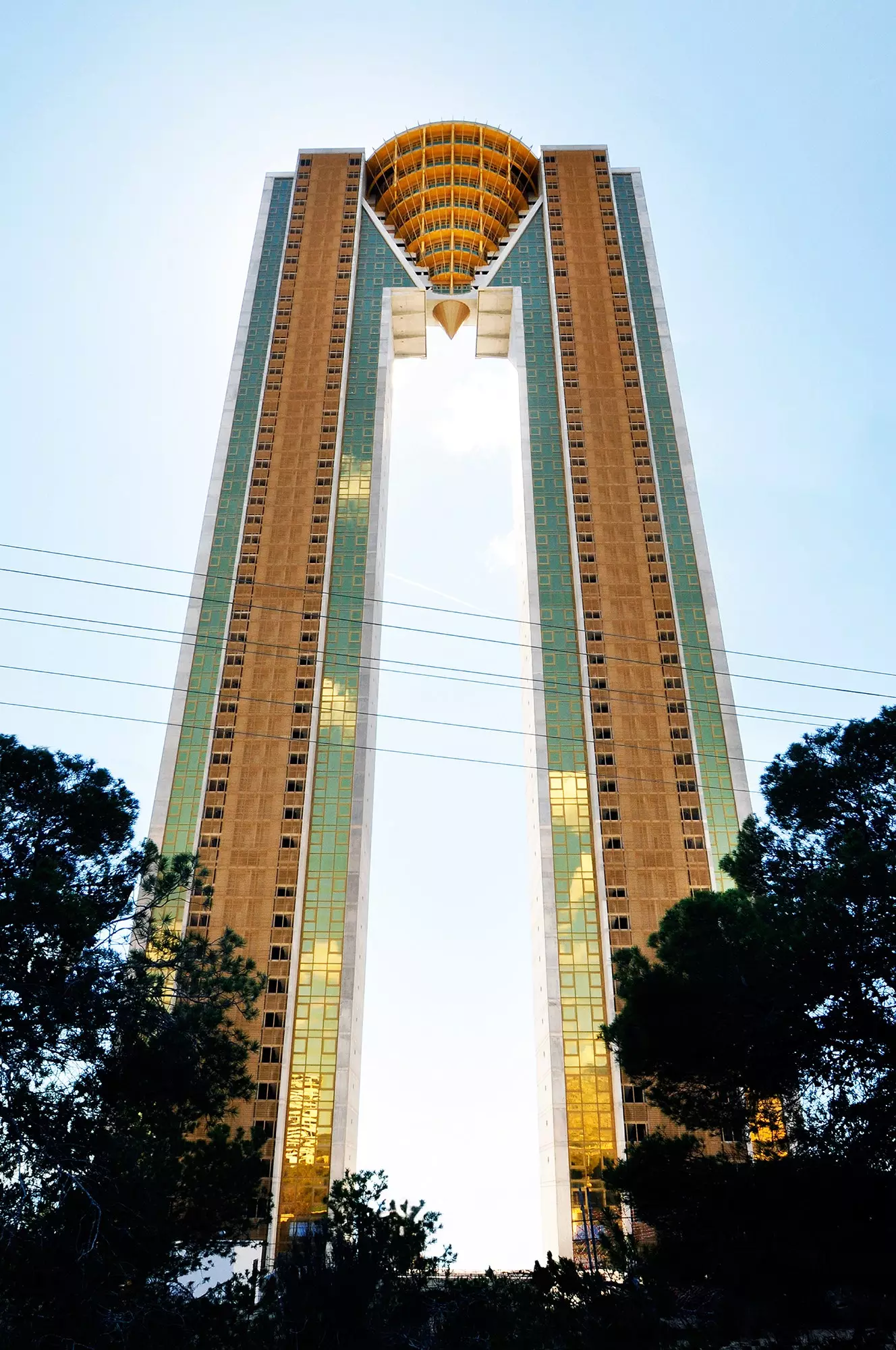
timeless building
Facing widespread disbelief, Benidorm is a candidate for the status of UNESCO World Heritage in the category 'New city of the 20th century'. TVE sets its latest glamorous series, Fugitiva, here.
And not least, Conde Nast Traveler publishes a report (this one you are reading) of an English writer fascinated by the profile of the city of Benidorm since he came on family vacations to the White shore in 1976.
The Spanish Mediterranean is full of Turistic cities, but none has the singularity of the extraordinary situation of Benidorm, flourishing on the barren shoreline like a no-frills Dubai.
The city was born in a rocky promontory that goes into the sea between two beaches, Levant and Poniente, spanning the bay like two huge arms.
The imposing massifs of the Sierras Gelada and Cortina and the enormous Puig Campana they rise around the valley, protecting it from wind and rain.
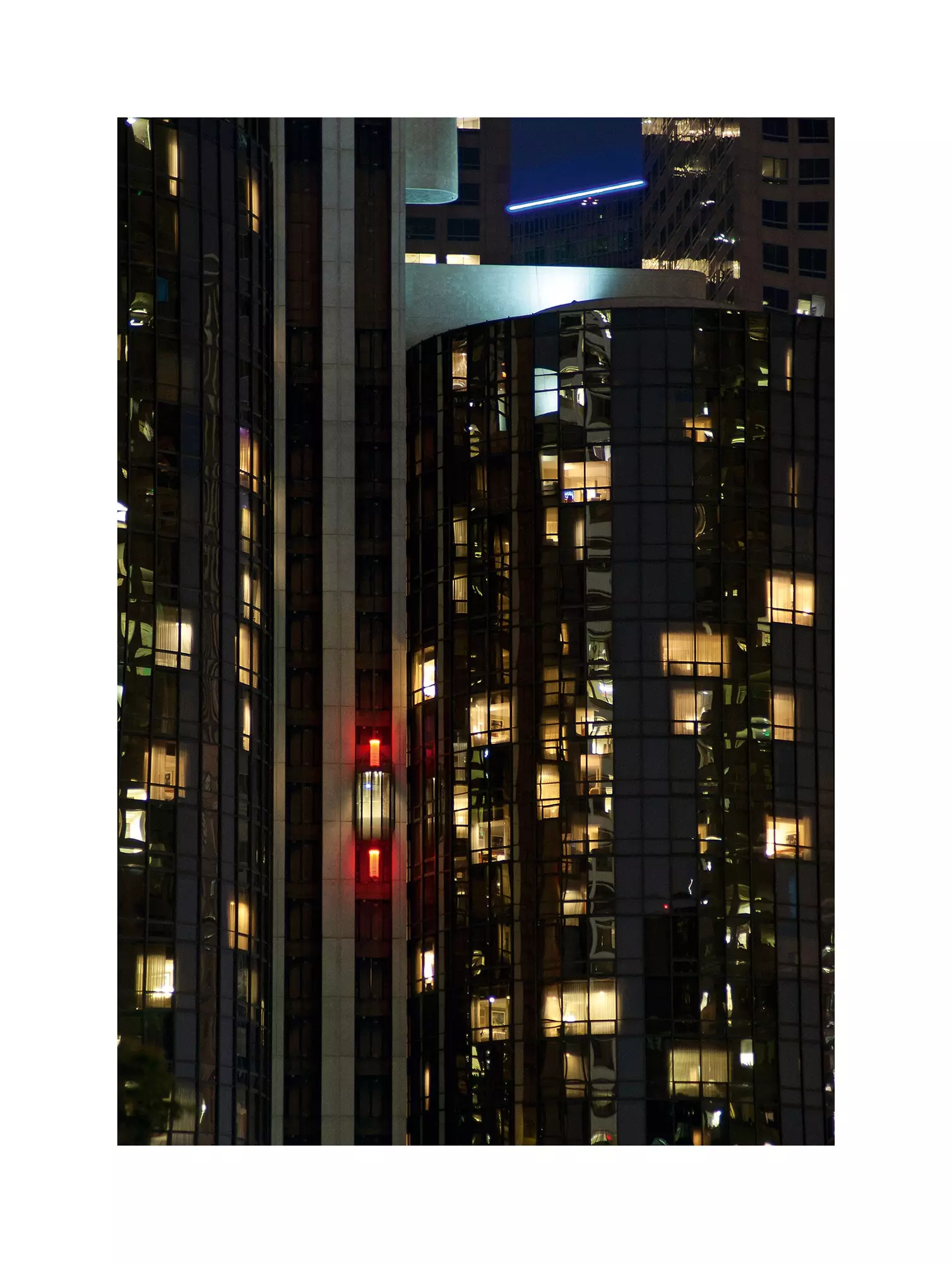
city skyline
But Benidorm is not only immune to inclement weather. What it offers its millions of visitors is a idyll of freedom and pleasure, away from the wind and rain of the outside world.
Take a walk around the city. The streets are full of people talking a babel of languages and accents, smiling and walking placidly.
middle aged couples they go hand in hand, some a little shy, as if it were a practice they don't allow at home.
Imagine the contrast between the warmth and the light here, relaxed lifestyle, the friendliness of the locals and the cold, gray and buttoned-down reality of the northern countries from which most of them come.
In Benidorm every day It is Saturday. in the streets of its modernized version of an old Mediterranean town, tourists come and go gobbling up ice creams, buying shoes or old fashioned souvenirs (the apron with the recipe paella is as popular today as it was in 1976), or having pints of beer at noon at the terrace tables.
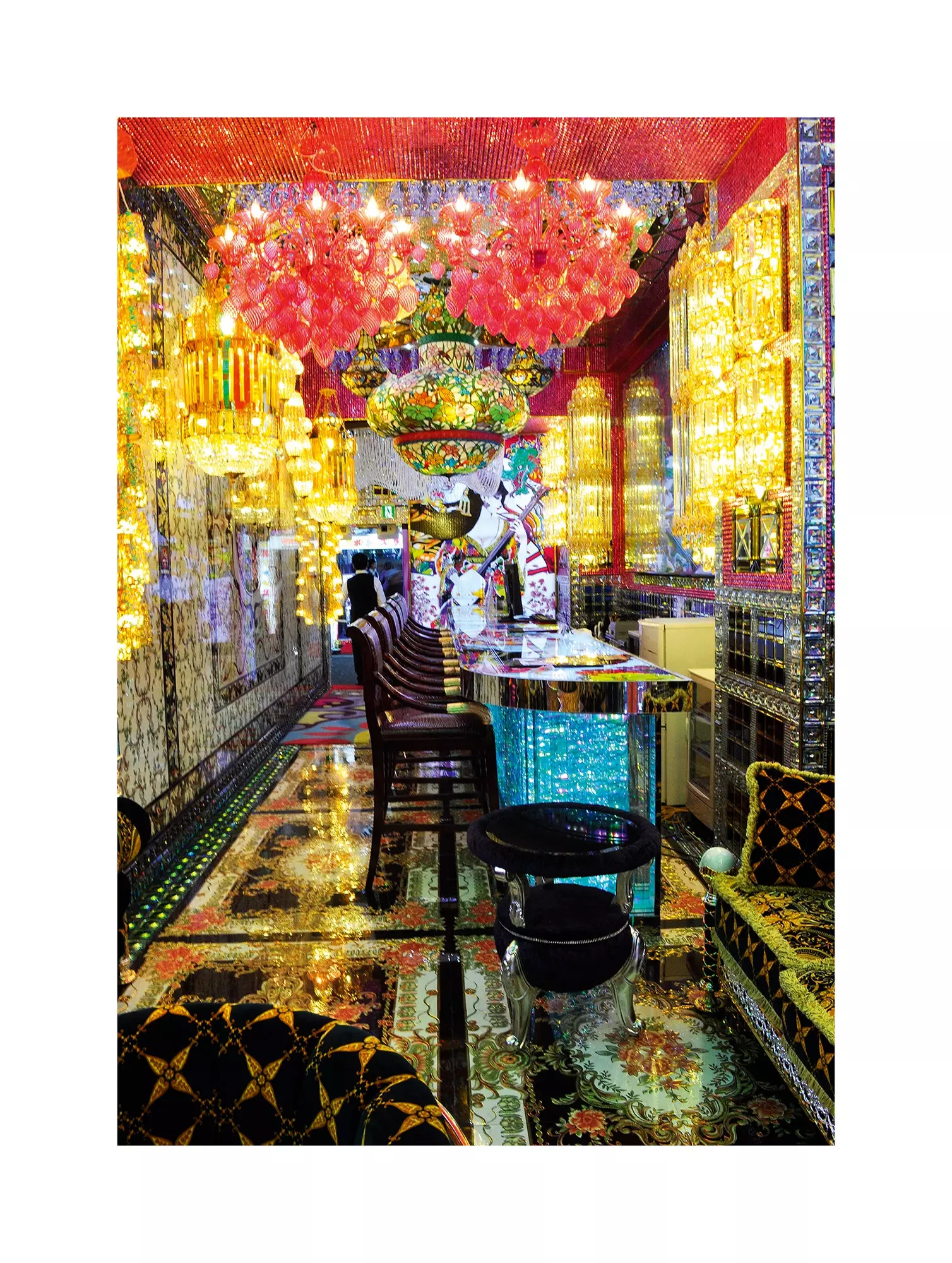
Bingo in the old town of Benidorm
at the bar by Jeff and Carol, in the Plaza de la Signoria, a group of women with shoulders already pinkish from the sun empty a pitcher of sangria. Satisfied faces that turn like flowers towards the light of the sea. Now look a little closer, look at the way the city works. The streets are clean and orderly; the beaches too.
Most of the tourists arrive from Alicante airport by bus, so rental cars are scarce and traffic flows easily along the mediterranean avenue . The peculiar design of the city, which happily mixes residential areas with shops and services, makes it perfect for walkers and cyclists, and the distances are short.
Most of the old town has been pedestrianized and free public Wi-Fi, available throughout the city, is just the latest example of their continued push for a higher quality of life.
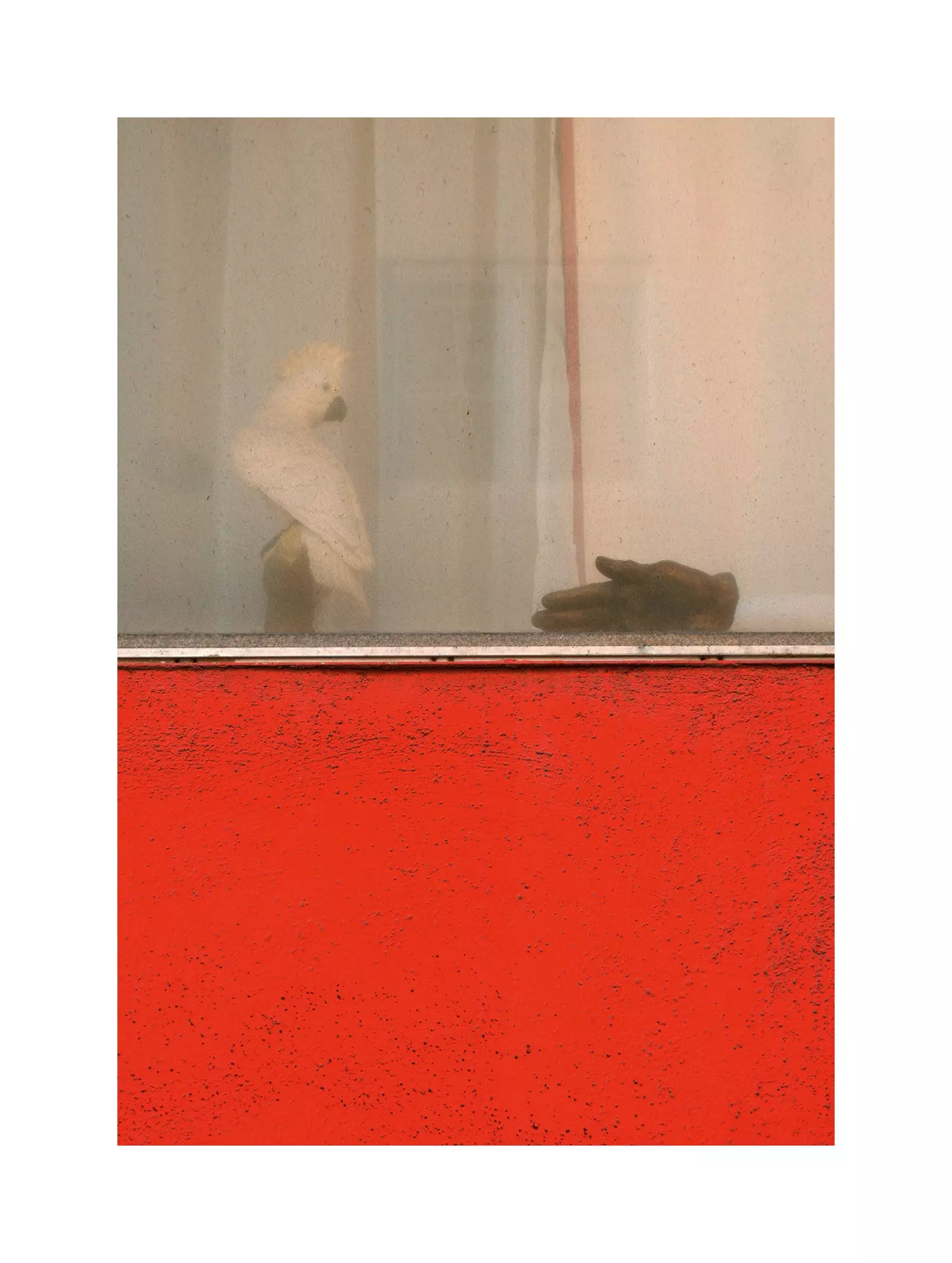
Art or kitsch decoration? On Gardenias street in Benidorm
The history of Benidorm it is quite strange and interesting. Founded in 1325 by the Catalan nobleman and diplomat Bernat de Sarrià, for centuries the town struggled to survive and, on one occasion (in 1438), was attacked by pirates from the african coast who took its entire population to be enslaved, leaving it almost deserted.
In the Boca de Calvari Museum, a recent addition to the cultural offer of the city, an exhibition of old photographs shows Benidorm before the dawn of tourism: a bunch of buildings grouped on a rock, crowned by the dome and the tower of the church, whose beaches are lonely expanses with almond and olive groves behind their backs.
A woman crouches over the black stain of a fishing net. Two children play in the dusty street, next to a gasoline pump. There is a simplicity and innocence in this disappeared world that excites the more sensitive souls. In the same way, benidorm does not give in to nostalgia, but has always looked with a clear determination for the future.
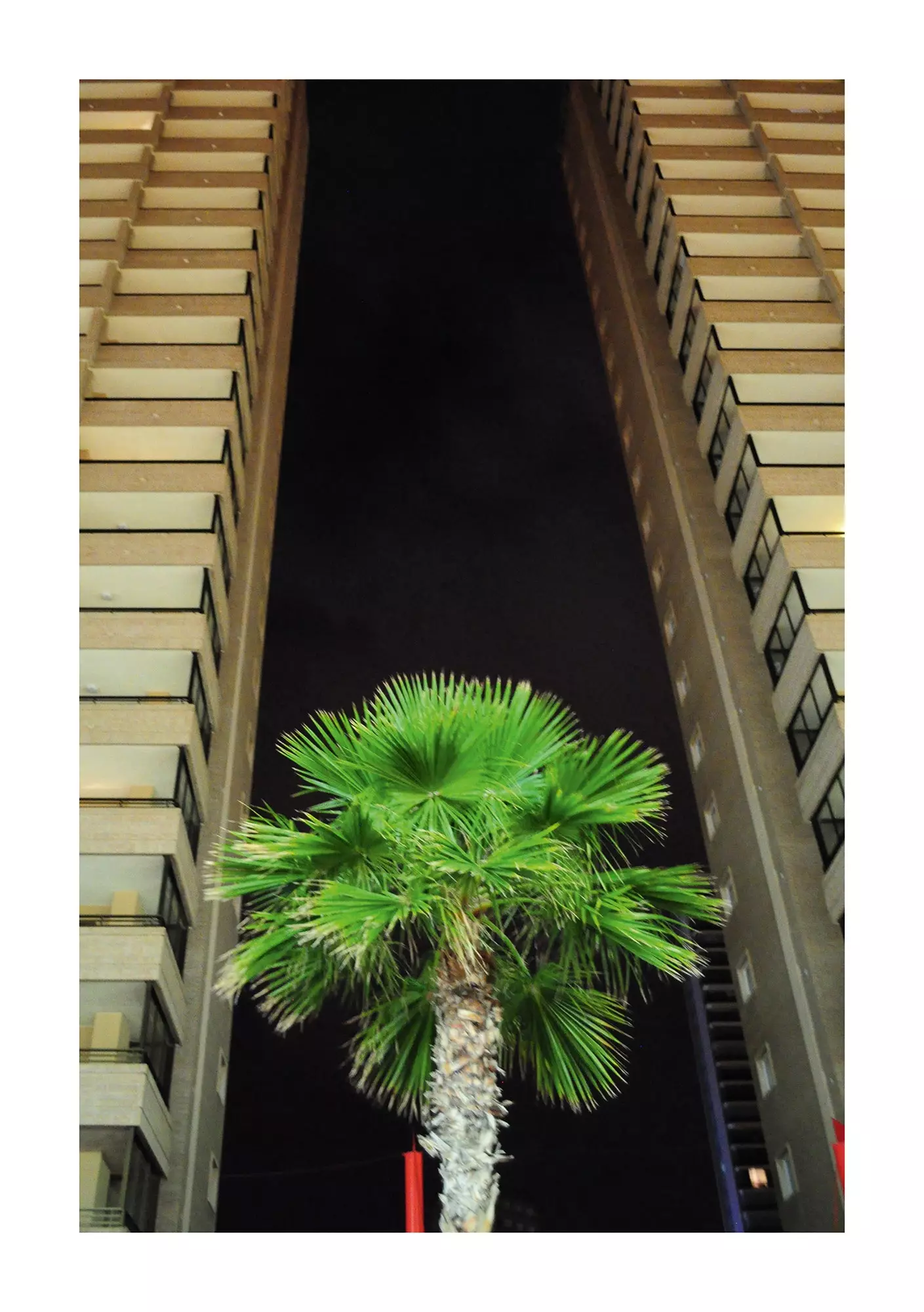
Tropical detail on Madrid avenue in Benidorm
join the crowd of visitors in its slow procession along the Levante beach in the afternoon light. Beneath the ride, a choir in flip flops and t-shirts sing habaneras on the beach. Now continue along the Alameda towards the rocky outcrop officially known as the Canfali and colloquially as The Castle.
The village church still has its Valencian dome with blue tiles; the little harbor below is a distant reminder of the maritime past of Benidorm.
Here you can stop at malpas bar, the best kept culinary secret in the city, where Trini Mas serves a sticky rice that does more than shade the paellas for tourists. Trini arrived from Sella, an inland town, in 1963, and she never left: “Benidorm hooks and a lot”.
From the high esplanade of the castle with its whitewashed balustrades, pointing to the bright blue sea like the prow of a ship, the view shows with high definition clarity what has happened to Benidorm since the first General Urban Planning Plan of 1956.
the line of skyscrapers along the two beaches, I raised on the north side, West in the south, they form a horizon that rivals that of Miami or Rio de Janeiro . There is a sense of order here, of a rational project carefully followed.
Each tower has its own architectural personality, but none of them pushes its neighbor, and each has space around it to let pass air and sunlight like trees in a mighty forest.
The contrast between this municipality and certain neighboring cities along the white coast, where the development has been a chaotic pitched battle , it's dramatic.
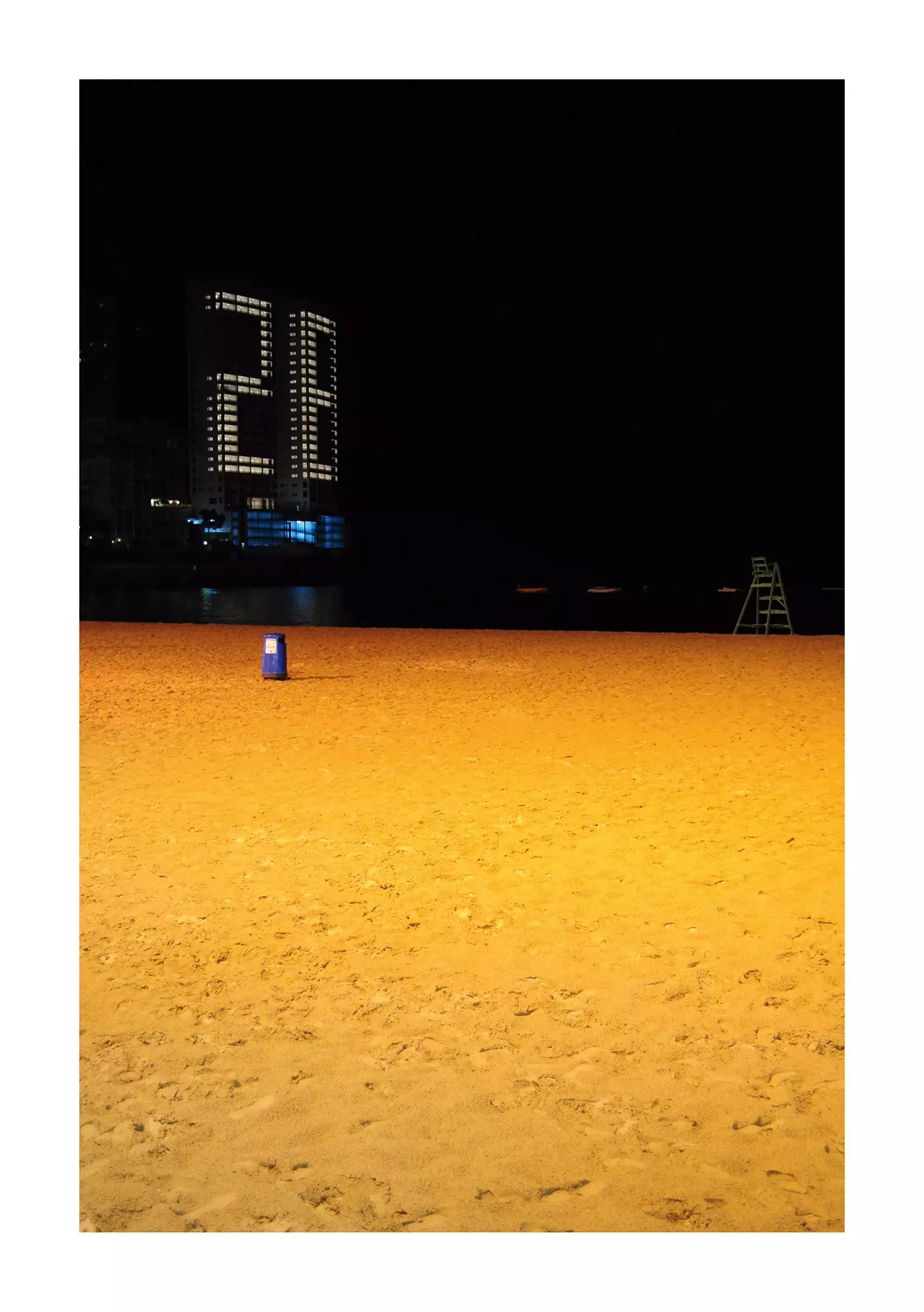
Levante beach at night
The successful transformation of a community of 3,000 souls who lived (badly) from the tuna fishing into a world tourism icon is generally attributed to Pedro Zaragoza Orts ('Peret' to his friends), mayor of Benidorm de 1950 to 1967 and a man whose legend matches that of the city he created.
The time has come, the man has come. Saragossa entered the City Council at a time when the economy of Spain, income hungry, craved the juicy wads of currency that promised tourism. His plans for benidorm, They certainly benefited from a political climate in which big projects could be carried out without much difficulty if you knew the right people (and he knew them).
But there was something in the personality of Zaragoza, a c combination of charm, willpower and an unshakable belief that A better future it was as possible as it was achievable, which made it a reality.
When he was threatened with excommunication from the Bishop of Valencia for allowing the bikini to be worn in the benidorm beaches, as the story goes, 'Peret' he traveled to Madrid on his trusty Vespa and convinced Franco and his wife.
His publicity stunts were famous: he carried almond blossoms to finland and he brought the Lapps to parade in traditional costumes. Saragossa started the benidormfestival, inspired by San Remo, which he launched the races of Raphael and Julio Iglesias.
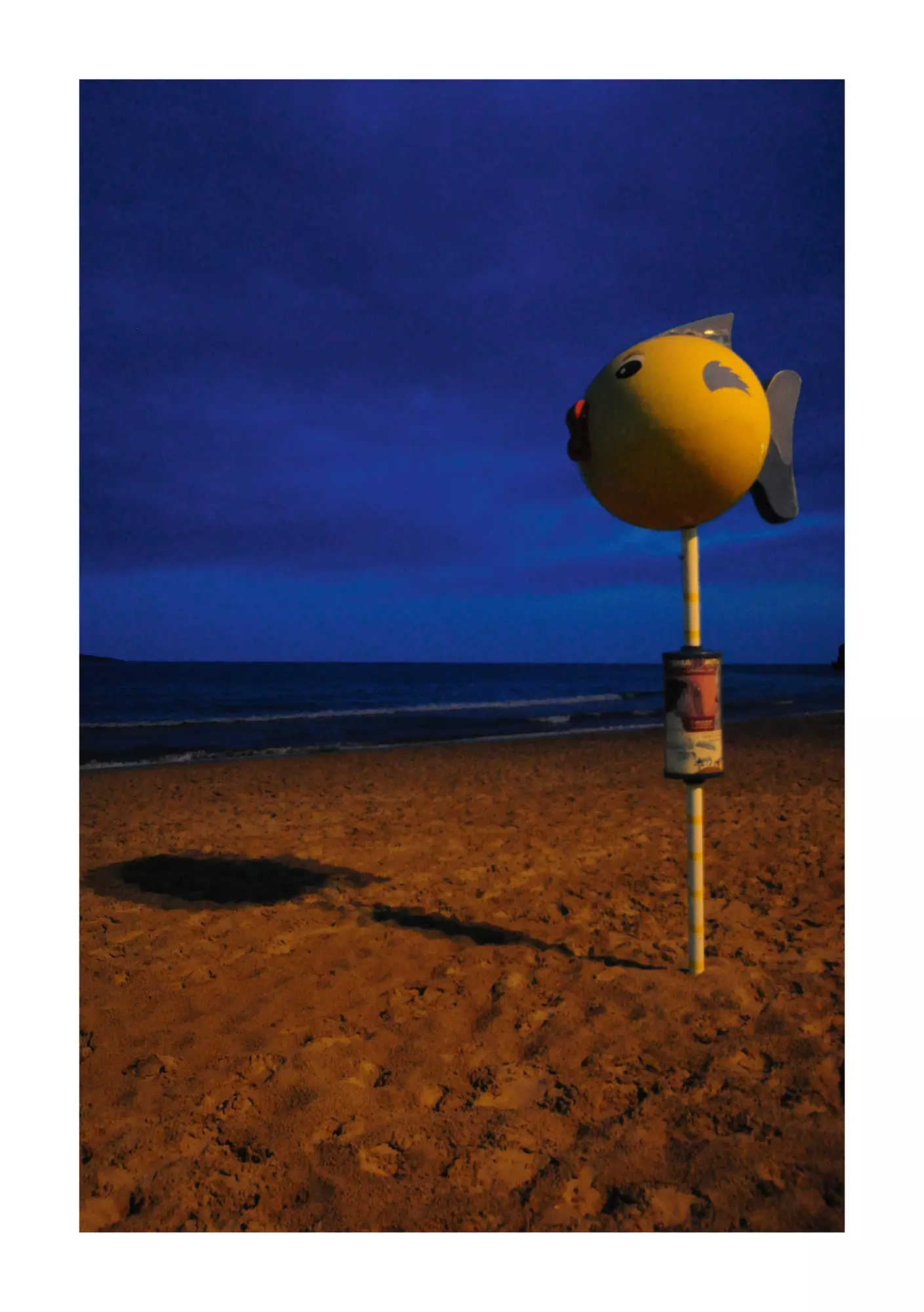
Path of the Balcony of the Mediterranean in Benidorm
The history of Spain in the last 60 years is written here in concrete, glass and brick. So far, Benidorm's architectural heritage hasn't been one of the main reasons to visit, but it won't be long before design students roam the city with notebooks in hand.
The city has more skyscrapers per square kilometer than any other place on the planet except New York, and the 'vertical model' of the 1956 General Plan was widely acclaimed by modern planners for its smart consumption of land and resources.
Everyone has their favorite buildings, from the Levante Tower, 120 meters slim minimalist elegance Carlos Gilard, the impressive coastal slab of Torre Coblanca, an early work by Juan Guardiola, and the bulbous, brutalist shapes of 148 meters from Neguri Gane, by Perez-Guerras.
lovers of modernity mid-century and chic Mad Men they will be in their element Levante Beach , place of the first edifying push important part of Benidorm, where the high-rise buildings of the 60s and 70s with its concrete latticework and rhythmic balconies that used to be thought of as rude and ugly now give off an enticing breath of retro glamour.
Poniente, built later, is bigger and bolder, with the timeless building, a glittering gold arch that would not be out of place in the capital of some oil-rich Central Asian republic, and the Grand Hotel Bali, 186 meters high, the tallest hotel in Europe. If Benidorm were a Manhattan by the sea, this would be its Empire State Building.
And when the urban jungle it gets too much, there is another kind of wildlife just around the corner. If a way of measure quality of life of a city is how quickly you can get out of it, Benidorm has a high rating.
From the end of Levante, where the towers go out, a path leads over the promontory and in a matter of minutes you are on the Serra Gelada Natural Park. Below is the small Mediterranean cove of Uncle Ximo, heartbreakingly beautiful, where it is said (another Benidorm legend) that Uncle Ximó rented his stone cabin to the couples on his wedding night.
Runners and walkers run the coastal paths. North from the Tower of Les Caletes from the 16th century, recently restored, there is an amazing view of cliffs rising to 300 meters of orange-tinged rock with ocher-colored deposits, as if touched the setting sun.
Back in the city the night walk is in full swing. Families huddle in the corridors of the beach. The grandmothers go from one place to another in the senior mobility vehicles. A girl in a black tracksuit runs past with a small white dog at her heels.
You'll hear French and Portuguese, Norwegian and Russian spoken, not to mention British accents from Newcastle, Birmingham, Liverpool and Glasgow. Benidorm is multicultural, diverse and wildly cosmopolitan.
sociologist Jose Antonio Nunez de Cela at City Hall, he says the city has no social hierarchies and its wealth is fairly distributed. in the towers, the balcony flags They are not only Spanish, but also Valencian, Asturian, British and from the Rainbow colors.
The Basques have taken Benidorm to their hearts, as has the gay community, which makes up for the city grace and the hedonistic spirit by organizing, in September, the fourth pride festival busiest in Spain.
Walking at sunset along the boulevards of Levante and Poniente you could almost be in a city of Latin America: notice the balmy air, the palm trees, the bright lights, the high-rise apartments, the reggaeton coming out of the bars, except there's no threat of street crime or favelas in the hills.
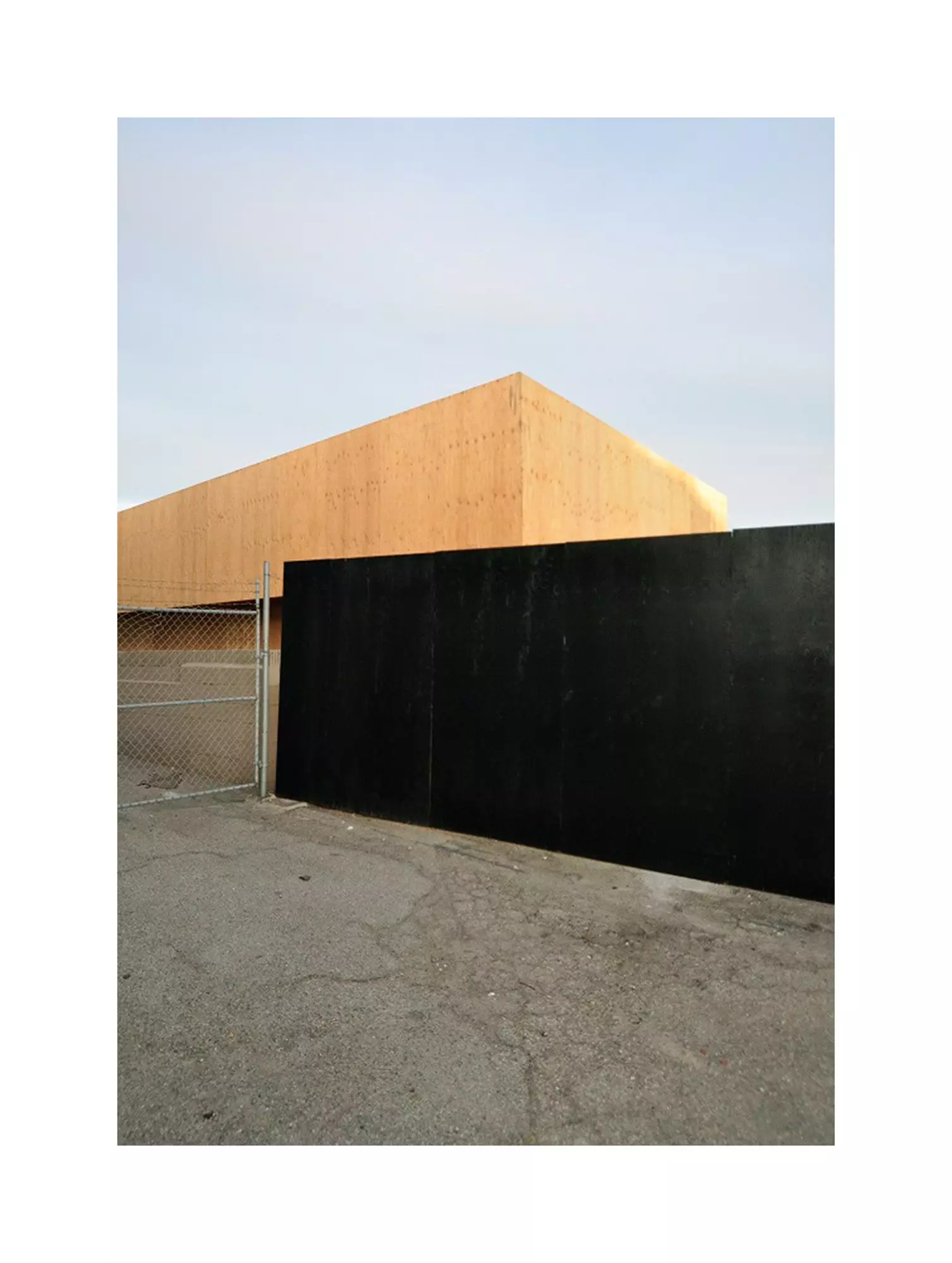
Access to the market on the Albir road
Now turn on the mediterranean avenue towards the streets of Ibiza or Mallorca. You'll know you're getting closer to the 'English quarter' seeing British tourists sitting down to dinner at seven o'clock, piling up their plates with roast meat in sauce.
beyond lies the notorious Rincón de Loix, its huge bars with open doors that at that time are already alive with bright lights and girls in pornographic poses. The tourists here are in their twenties, some in the process of undressing, others in groups in strange attire: the controversial british holidays of bachelor parties.
This is where the dream it turns rancid. It's kind of a nightmare to see the staggering drunks of Rincón de Loix, both men and women , and his loss of dignity. This is also part of Benidorm, but at least he is cornered and controlled.
In any case, the vast majority are happy with the quietest pleasures, such as shopping, walking, have a drink in the bars, the beach and sip coffee on the terraces. In the late afternoon, a family sits on a bench in the boardwalk, not drinking or partying, but happily chatting about the events of the day.
By accent and appearance, bare legs that were once white and are now bright pink, skimpy shorts and t-shirts, you'd say they're people from Scottish working class. They seem transported, ecstatic, as if they cannot believe the paradise they have found and the 18 degree temperature What are you doing here on this spring night?
Next to the bench, under a copse of elegant palm trees, there is a fountain where white doves flutter and coo. the scottish family You don't see it, but under the water there is a stone plaque (originally a gift for Mayor Zaragoza, from his friends), with an inscription that says something simple about the undeniable and unwavering attractiveness of Benidorm: "Of illusion also lives".
***** _This report was published in **number 119 of Condé Nast Traveler Magazine (July-August)**. Subscribe to the printed edition (11 printed issues and a digital version for €24.75, by calling 902 53 55 57 or from our website). The July-August issue of Condé Nast Traveler is available in its digital version to enjoy on your preferred device. _
